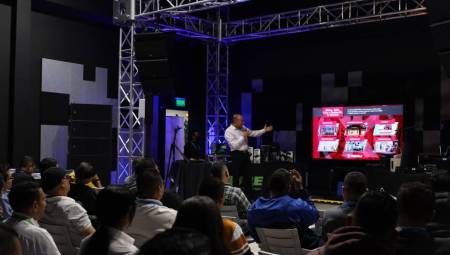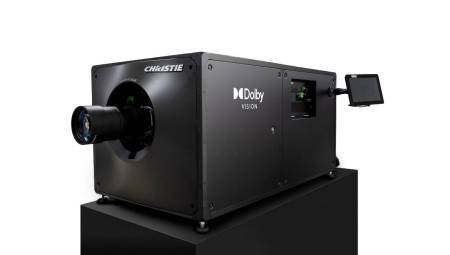Latin America. In the changing security landscape, non-visible light technologies such as thermal imaging, audio detection, millimeter radar, and X-ray systems are gaining increasing recognition for their ability to complement traditional visible-light cameras. These technologies improve detection and monitoring capabilities, especially in harsh environments.
To further explore the adoption of these advanced technologies, asmag.com and Hikvision teamed up to conduct a survey examining the implementation and full potential of four key non-visible light technologies. Asmag.com surveyed its database of professional readers from all regions of the physical security world from September 30 to October 8, 2024. Invitations to participate in the online survey were shared on social media, on the asmag.com website and sent via email. After a review of the responses and data cleansing, a total of 150 respondents were included in the analysis. The main findings were as follows:
1.- Positive outlook on future investment: When respondents were asked what technologies they will invest in or offer in the near future, the majority (61%) mentioned thermal imaging. This was followed by millimeter radar technology (48%), audio technology (45%), and X-ray technology (37%).
This trend indicates a general awareness and willingness of solution providers to adopt these technologies to address changing customer requests and demands. Thermography, which is often employed in perimeter security and night surveillance, is the best option due to its ability to operate effectively in complete darkness or through smoke and fog. Millimeter radar and audio technology is also gaining traction for its applications in areas such as traffic management and crowd control.
2.- Optimistic growth projection for non-visible light technologies: Respondents were generally optimistic about the growth of non-visible light technologies in the security industry over the next five years. 92% of respondents expect moderate to significant growth in thermal imaging, once again highlighting its widespread use and versatility. This is followed by predictions for audio (76%), millimeter radar (63%) and X-ray (57%) technologies.
The data suggest particularly strong growth potential for millimeter radar. Currently, 29% of respondents offer this technology, but 48% plan to introduce it in the short term, indicating a significant growth trend. Radar technology is increasingly finding applications in sectors such as transportation, healthcare, and smart cities, where it is valued for its ability to detect motion and track objects in all weather conditions.
High costs and complexity: key barriers to adoption: Despite the positive outlook, the survey identified several barriers to the adoption of non-visible light perception technologies. The main challenge is the high initial investment, cited by 69% of respondents. Other major challenges according to respondents include technical complexity (49%), maintenance and support costs (41%) and the regulatory/legal framework (37%).
This is understandable, as these technologies tend to be more expensive than conventional visible light solutions. For example, high-end thermal cameras can cost anywhere from $1,000 to $10,000, compared to 2-megapixel cameras that typically cost only $30 to $100. X-ray machines are even more expensive, with prices starting around $50,000 and reaching millions for advanced systems, not including installation and maintenance costs.
This can cause hesitation among users when choosing non-visible light solutions, and highlights the need for manufacturers to reduce costs and simplify deployment to increase future adoption. In addition, regulatory compliance, particularly for X-ray systems, requires certifications and adherence to strict guidelines, adding another layer of difficulty for adopters.
ROI and Case Studies: Key Factors for Adoption: When asked about the factors that would drive adoption in the future, return on investment (ROI) and case studies/success stories emerged as the top drivers, each garnering 59% of responses. Given the higher costs associated with non-visible light technologies, end users need a clear ROI to justify the investment. Demonstrating the effectiveness of these technologies through case studies will also help build trust among potential buyers.
Customer demand (53%), technological advancements (51%) and new applications (47%) were also highlighted as important factors influencing the future adoption of non-visible light technologies.
5. Emerging applications and integration: Respondents were asked to comment on new emerging applications/use cases that they believe would drive the adoption of non-visible light technologies in the future.
Integration with other systems was frequently mentioned as a key growth factor, with respondents suggesting that integrating non-visible light technologies not only with visible light cameras but also with each other can optimize systems. Some of the responses were:
• "The new technology is great, but the important thing is to be able to integrate it into the system: the investment cost is not much."
• "The integration of millimeter radar technology with thermal and speed detection cameras can improve the efficiency of traffic management."
• "Integration with biometrics and camera".
• "Integration with other technologies."
• "DAS system that provides detection along the route and at the same time enables the communication infrastructure."
• "I think the use of audio in camera systems will increase in the future."
AI and advanced analytics are also expected to play a crucial role in driving adoption. Several respondents noted that AI-powered features such as automatic event detection are an important feature. Integrating AI for audio edge detection can improve monitoring by recognizing sounds related to threats or security incidents. Some responses were:
• "Further development of AI functionalities and greater focus on the automatic handling of events, sensors and cameras, e.g. automatic transfer between cameras and the need for sensor knowledge."
• "AI Audio Edge Detection"
• "AI applied to audio to monitor all kinds of safety and security events. Combined with video for greater detection accuracy."
• "Technology and AI".
• "AI-based intelligent video images"
• "AI Audio Edge Detection"
• "AI applied to audio to monitor all kinds of safety and security events".
Security applications remain the main use cases for these technologies. In addition to protecting perimeters, these technologies are being implemented in areas such as hazardous materials detection and factory automation. Their ability to detect threats or monitor environments in conditions where traditional visible light systems fail makes them invaluable in critical infrastructure and high-risk environments.
In summary, non-visible light technologies such as thermal imaging, audio detection, millimeter radar, and X-ray systems are gaining momentum in the security industry. While their higher costs and complexity may slow their adoption, their potential is clear, especially when combined with AI and integrated into broader systems. As more success stories emerge and the return on investment becomes more apparent, we can expect to see these technologies play an even bigger role in addressing security challenges, particularly in areas where traditional cameras are not up to the task.
















